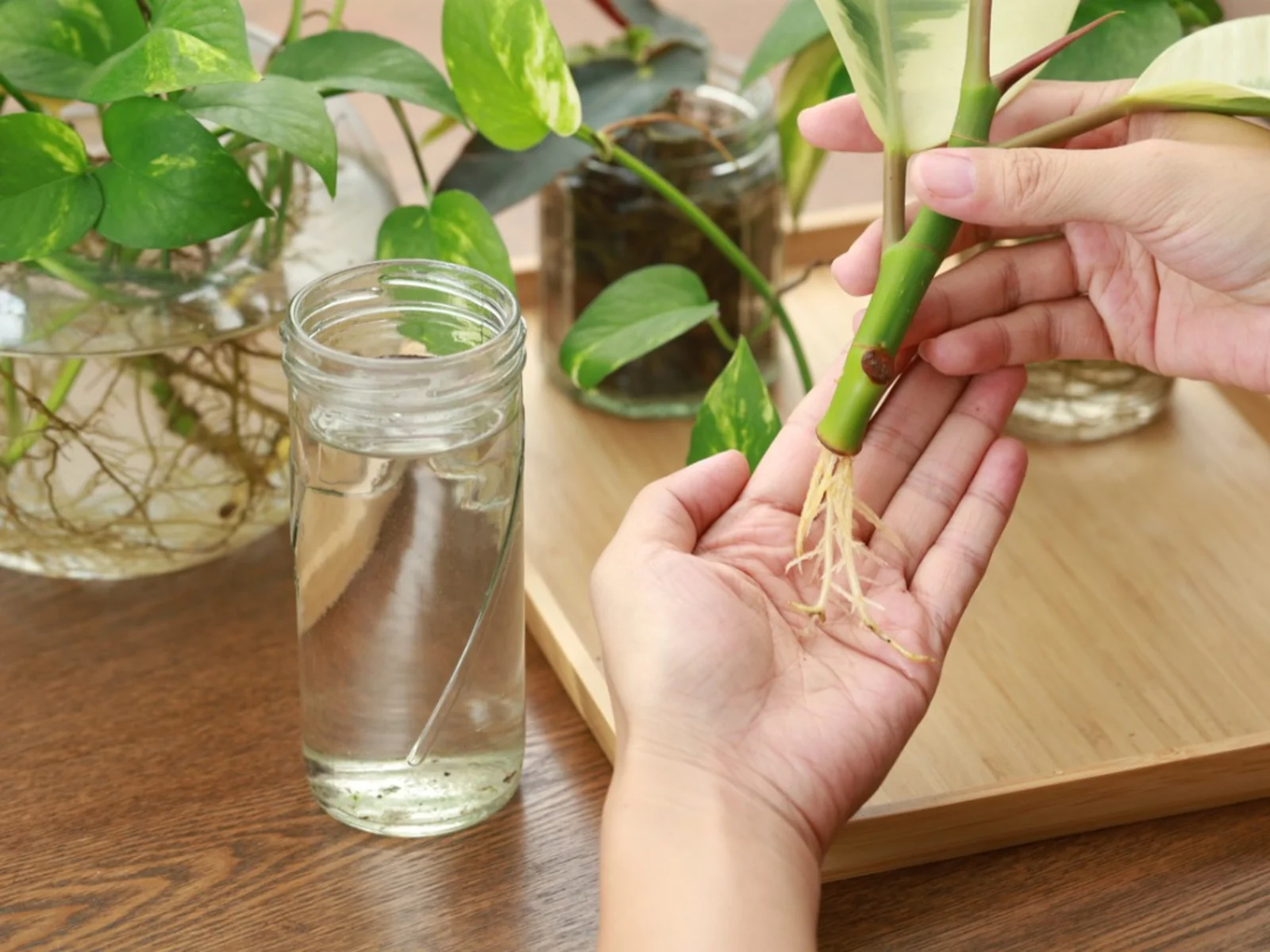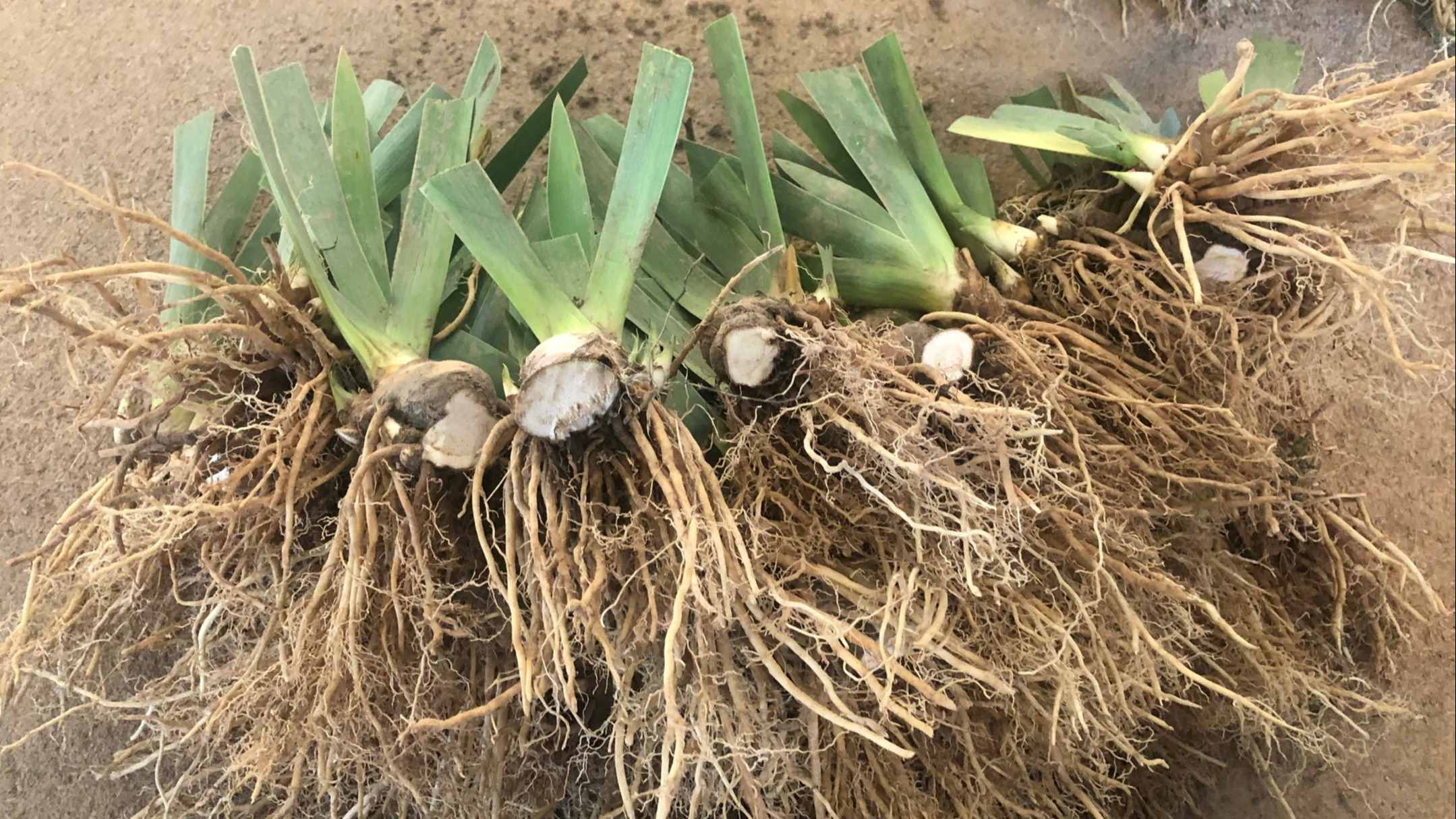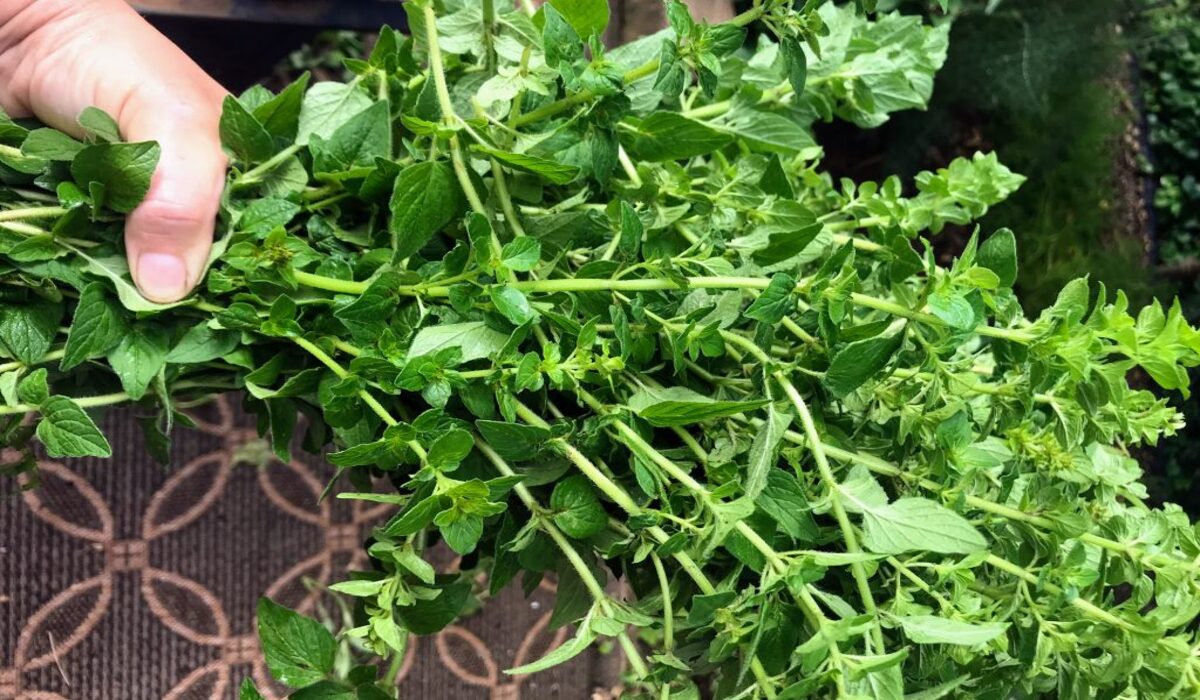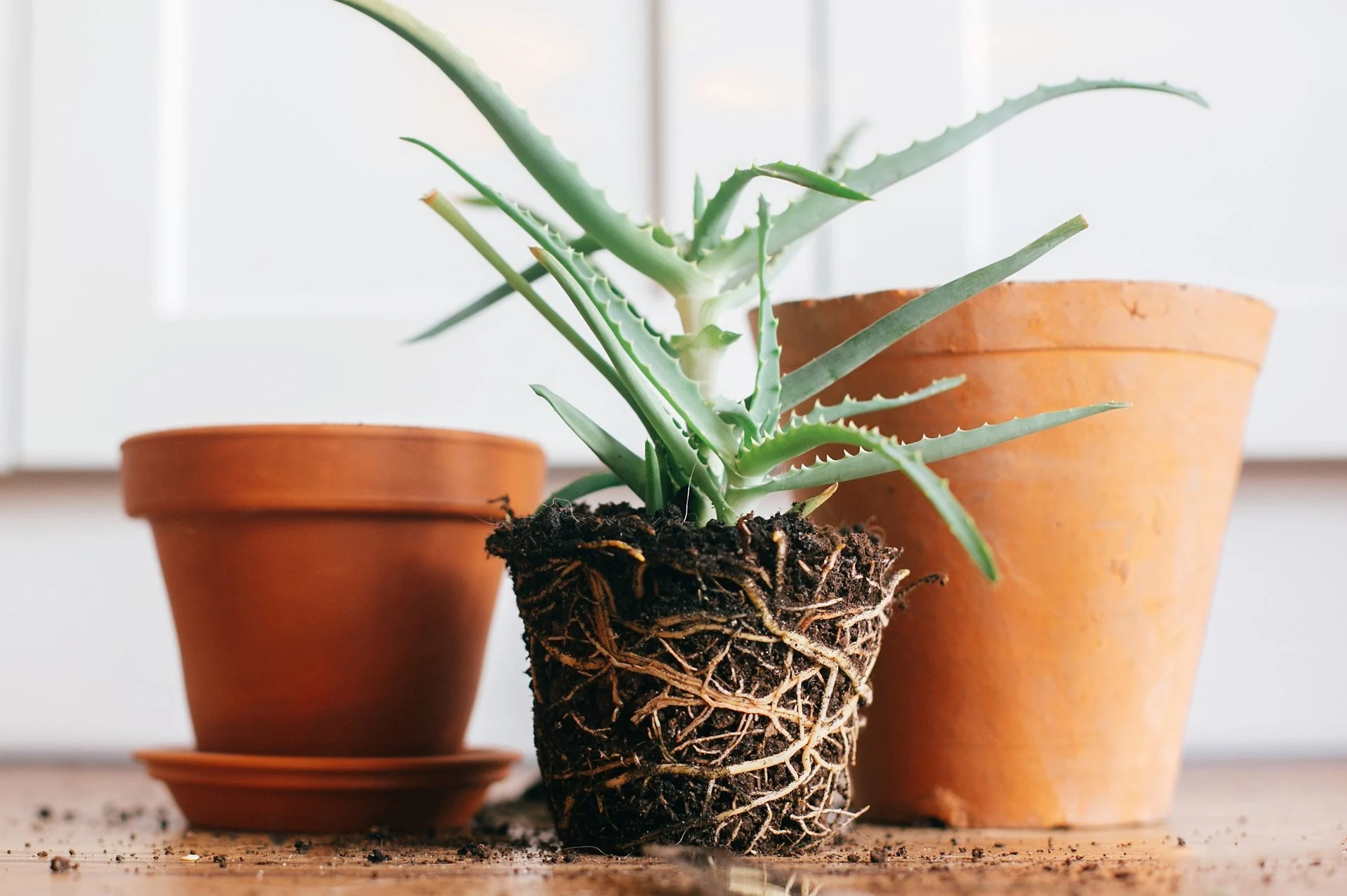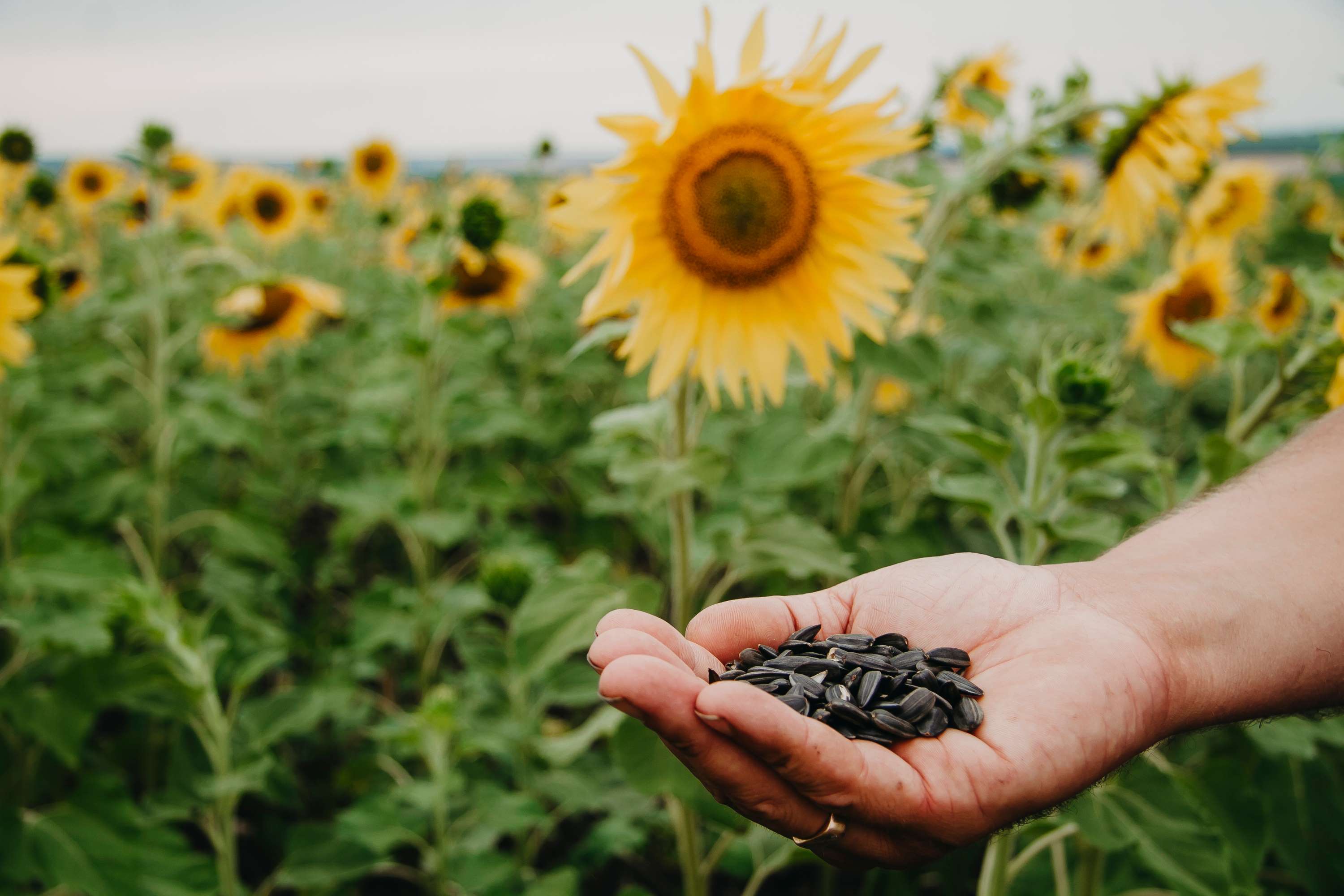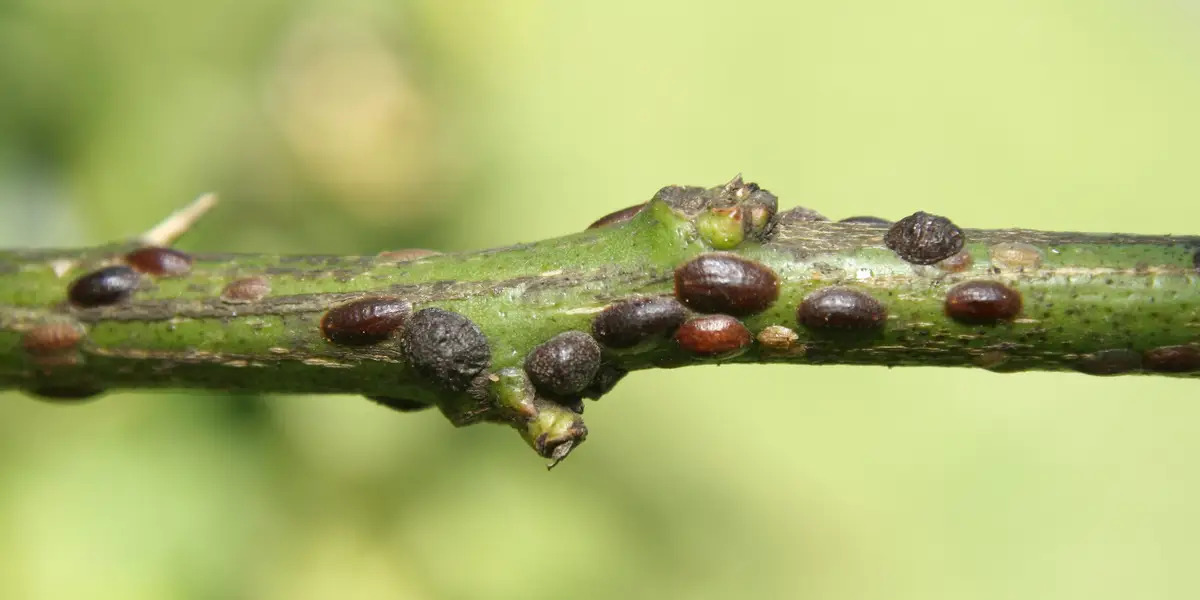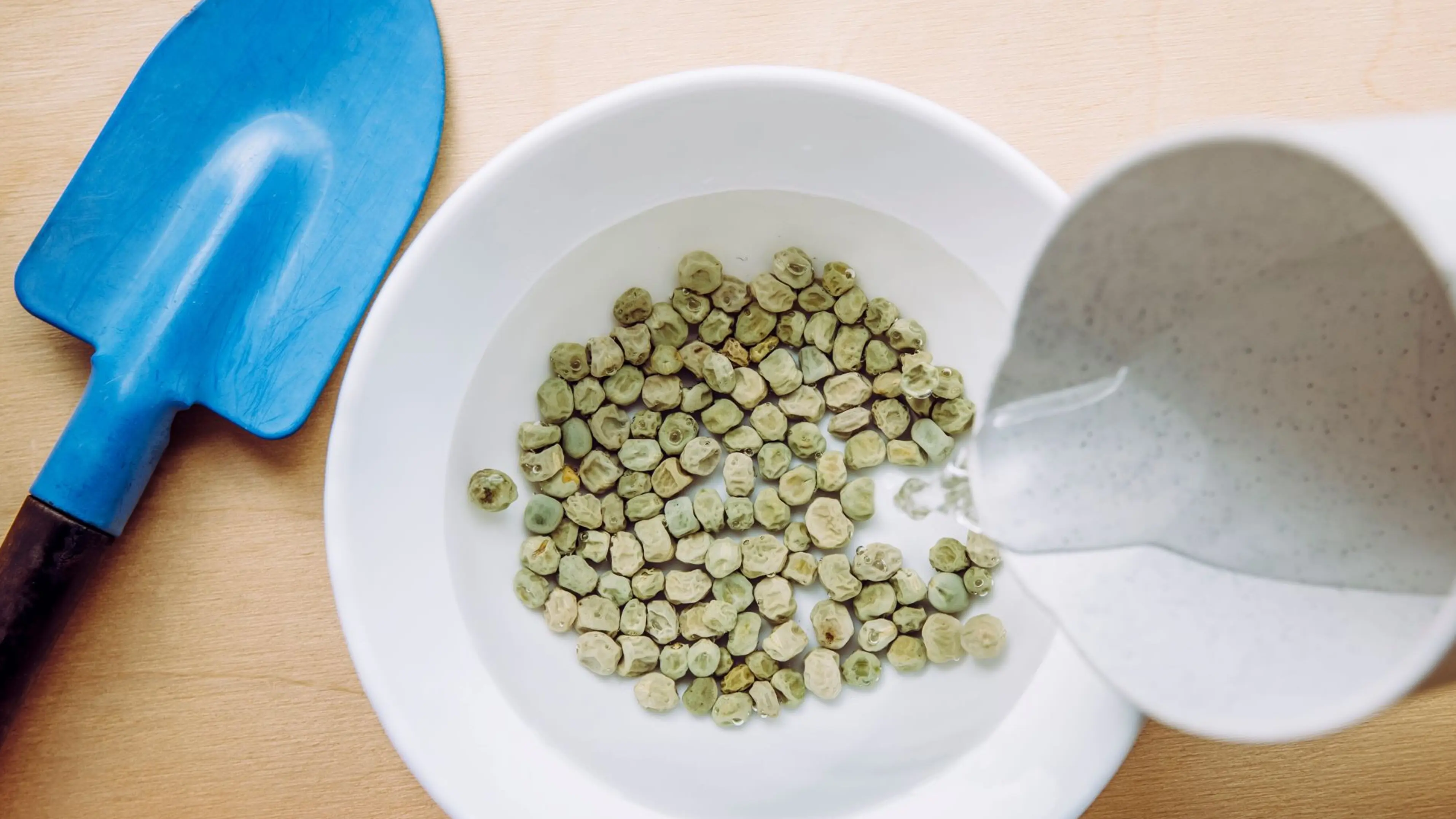Home>Gardening Tips and Tricks>Problem Solving>How To Kill Bugs In Soil Before Planting


Problem Solving
How To Kill Bugs In Soil Before Planting
Modified: February 9, 2024
Learn effective methods for solving the common problem of bugs in soil before planting. Discover how to kill bugs and ensure healthy plants for your garden.
(Many of the links in this article redirect to a specific reviewed product. Your purchase of these products through affiliate links helps to generate commission for Chicagolandgardening.com, at no extra cost. Learn more)
Table of Contents
- Introduction
- Importance of Killing Bugs in Soil before Planting
- Common Bugs in Soil and Their Effects on Plants
- Signs of Bug Infestation in Soil
- Methods to Kill Bugs in Soil before Planting
- Natural Remedies for Killing Bugs in Soil
- Chemical Options for Killing Bugs in Soil
- Tips to Prevent Future Bug Infestations in Soil
- Conclusion
Introduction
When it comes to successful gardening, one of the essential factors to consider is the quality of the soil. However, even the most fertile soil can become a breeding ground for unwanted pests and insects that can harm your plants. This is why it is crucial to address the issue of bugs in soil before planting to ensure the health and vitality of your garden.
Killing bugs in the soil before planting is important for several reasons. First and foremost, bugs can cause extensive damage to plants, resulting in stunted growth, wilting, and even death. They can feed on the roots, leaves, and stems of your plants, causing them to become weak and vulnerable to diseases.
Furthermore, bugs in the soil can introduce harmful pathogens and diseases that can quickly spread throughout your garden. This can lead to the decline of the entire plant population and can be devastating for both home gardeners and commercial growers.
In addition to the direct damage they cause, bugs in the soil can attract other pests, such as rodents or birds, that feed on them. These secondary pests can further damage your plants or disrupt the overall ecosystem of your garden.
Identifying the presence of bugs in your soil is the first step in taking appropriate action. By learning how to recognize the signs of bug infestation, you can address the problem early on and prevent severe damage to your plants.
There are various methods to kill bugs in the soil before planting. Natural remedies, such as companion planting, beneficial nematodes, or insect-repelling plants, provide environmentally friendly options to deal with bugs in the soil. However, in more severe cases, chemical options might be necessary to effectively eliminate pests and protect your plants.
In this article, we will explore common bugs found in soil, the signs of bug infestation, and effective methods to kill bugs in soil before planting. Whether you are a seasoned gardener or just starting, following these guidelines will help you maintain a healthy and thriving garden.
Importance of Killing Bugs in Soil before Planting
Ensuring a healthy and productive garden starts with addressing the issue of bugs in the soil before planting. Here are several reasons why it is crucial to kill bugs in soil before starting your garden:
1. Protecting plant health: Bugs in the soil can wreak havoc on your plants by feeding on their roots, leaves, and stems. Their constant nibbling can weaken plants, making them more susceptible to diseases and reducing their overall growth and productivity. By eliminating bugs before planting, you create a healthier environment for your plants to thrive.
2. Preventing pest infestations: Bugs in the soil can attract and serve as a food source for other pests, such as rodents or birds, that can cause additional damage to your garden. By eliminating bugs early on, you minimize the risk of attracting secondary pests and help maintain the balance of your garden’s ecosystem.
3. Minimizing the spread of diseases: Bugs in the soil can carry and spread harmful pathogens that can quickly infect your plants. These diseases can have devastating consequences, leading to widespread plant decline and even crop loss. By killing bugs in the soil, you reduce the risk of disease transmission and promote the overall health of your garden.
4. Enhancing plant nutrient absorption: Bugs in the soil can disrupt the nutrient absorption process of your plants. They can damage the root system, preventing the plants from taking up essential nutrients from the soil. By eliminating bugs, you ensure that your plants can access the nutrients they need for optimal growth and development.
5. Promoting a more sustainable approach to gardening: Killing bugs in the soil before planting presents an opportunity to adopt more environmentally friendly practices. By utilizing natural remedies and methods, such as companion planting and beneficial insect incorporation, you can minimize the need for chemical pesticides and reduce the potential negative impact on the environment.
By recognizing the importance of killing bugs in the soil before planting, you set the foundation for a successful and bountiful garden. By taking proactive measures to eliminate bugs, you safeguard the health of your plants, prevent pest infestations, minimize disease spread, enhance nutrient absorption, and contribute to sustainable gardening practices.
Common Bugs in Soil and Their Effects on Plants
Before delving into the methods of killing bugs in soil, it’s important to familiarize yourself with the common bugs that may infest your garden. Here are some of the most prevalent bugs in soil and the effects they can have on your plants:
- Fungus gnats: Fungus gnats are small, fly-like insects that lay their eggs in moist soil. The larvae feed on decaying organic matter and plant roots, causing damage to the root system. This can lead to decreased nutrient absorption, stunted growth, and wilting of plants.
- Wireworms: Wireworms are slender, brownish-yellow larvae of click beetles. They feed on plant roots and underground stems, resulting in poor plant growth, yellowing leaves, and wilting. Wireworm infestations are particularly damaging to root crops, such as potatoes and carrots.
- Nematodes: Nematodes are tiny, thread-like worms that can be either beneficial or harmful to plants. Harmful nematodes, such as root-knot nematodes, feed on plant roots, causing swellings and deformities. This can lead to reduced nutrient uptake and weakened plants.
- Root maggots: Root maggots are small, white larvae that feed on plant roots, particularly of vegetables like radishes, cabbage, and onions. Infested plants may show stunted growth, yellowing leaves, and overall poor health.
- Slugs and snails: Slugs and snails are voracious pests that can be found in soil and damp areas of the garden. They feed on plant leaves, stems, and fruits, leaving behind trails of slime. Infested plants may exhibit hole-ridden leaves and cosmetic damage.
These are just a few examples of the many bugs that can inhabit your garden soil. It’s important to regularly monitor your plants and soil for signs of infestation to take appropriate action.
The effects of these bugs on plants can be devastating. They can weaken the root system, hamper nutrient absorption, and inhibit plant growth. In severe cases, bug infestations can result in plant death or crop loss.
By understanding the common bugs and their effects, you can better identify potential problems and take necessary steps to eliminate or control them. It’s essential to maintain a proactive approach to managing bugs in the soil to ensure the health and vitality of your plants.
Signs of Bug Infestation in Soil
Recognizing the signs of bug infestation in your garden soil is crucial for early detection and effective control. Here are some common signs that indicate the presence of bugs in your soil:
- Wilting or stunted growth: If your plants are failing to thrive and show signs of wilting or stunted growth, it could be a sign of bug infestation. Bugs like nematodes or wireworms can damage the root system, inhibiting the plant’s ability to take up nutrients and water.
- Yellowing leaves: Discolored or yellowing leaves, particularly when the veins remain green, can indicate the presence of bugs in the soil. Bugs like root maggots or fungus gnats can sap the energy from the plants, causing the leaves to lose their vibrant green color.
- Chewed or damaged foliage: Bugs like slugs or snails are notorious for leaving behind a trail of destruction on plant leaves. Look for signs of chewed or damaged foliage, as well as slimy trails or visible pests on the surface of the leaves.
- Root damage: Carefully inspect the roots of your plants for signs of damage or discoloration. If you notice chewed or browned roots, it may indicate the presence of pests like wireworms or nematodes.
- Pest presence: Some bugs may be visible in the soil or on the surface of the plants. Look for crawling or flying insects, larvae, or eggs in the soil or on the stems and leaves of your plants.
- Poor plant health: If your plants are generally weak, susceptible to diseases, or easily uprooted, it could be a result of bug infestation. Bugs in the soil can weaken the overall health of plants, making them more vulnerable to various stresses.
It’s essential to regularly inspect your plants and soil for these signs of bug infestation. Early detection allows you to take immediate action and prevent the pests from causing further damage. Keep in mind that the specific signs may vary depending on the type of bugs present and the plants you are growing.
By familiarizing yourself with these signs, you can quickly identify and address bug infestations in your soil. Combining regular monitoring with appropriate pest control measures will help you maintain a healthy and thriving garden.
Methods to Kill Bugs in Soil before Planting
When it comes to eliminating bugs in the soil before planting, there are several effective methods you can employ. These methods target different types of bugs and vary in terms of their approach and effectiveness. Here are some commonly used methods to kill bugs in soil:
- Soil Solarization: This method involves covering the soil with clear plastic and allowing the sun’s heat to raise the soil temperature to lethal levels for pests. The heat effectively kills bugs and their eggs, pathogens, and weed seeds. Soil solarization is especially effective in warm climates and during the summer months.
- Steam Sterilization: Similar to soil solarization, steam sterilization uses steam to kill bugs and pathogens in the soil. This method requires specialized equipment and is commonly used in commercial settings.
- Crop Rotation: Rotating crops can disrupt the lifecycle of bugs that have specific host plants. By alternating the types of plants you grow in a given area, you can effectively reduce bug populations over time.
- Companion Planting: Certain plants have natural insect-repelling properties or attract beneficial insects that prey on pests. By strategically planting these companion plants alongside your main crops, you can deter and control bugs in the soil.
- Insect-Repelling Plants: Introducing plants with known insect-repelling properties, such as marigolds, mint, or garlic, can help deter bugs from infesting your soil. The strong odors or chemical compounds released by these plants create a natural barrier against pests.
- Beneficial Nematodes: Nematodes are the microscopic worms that can act as natural predators to bugs in the soil. Applying beneficial nematodes to your soil can help control pests like fungus gnats, wireworms, and root maggots.
- Organic Matter Amendments: Incorporating organic matter, such as compost or well-rotted manure, into the soil can improve its overall health and fertility while creating a less favorable environment for pests. Healthy soil helps plants grow stronger, making them more resistant to bug infestations.
It’s important to consider the specific bug species you are dealing with and the plants you are growing when choosing the appropriate method. Some methods may be more effective against certain pests than others. Combining multiple methods and practices can provide a comprehensive approach to bug control in your garden.
Remember to follow instructions carefully, observe any safety precautions, and be patient. It may take time to see the full effects of these methods, but with consistent application and monitoring, you can effectively kill bugs in the soil and create a healthier environment for your plants.
Natural Remedies for Killing Bugs in Soil
When it comes to killing bugs in soil without the use of chemicals, natural remedies can be highly effective. These methods not only eliminate pests but also promote a more environmentally friendly approach to gardening. Here are some natural remedies for killing bugs in soil:
- Beneficial Insects: Introducing predatory insects that feed on garden pests can help control bug populations. Ladybugs, lacewings, and praying mantises are natural predators that can effectively eliminate aphids, mites, and other pests from your soil.
- Nematodes: Beneficial nematodes, which are microscopic roundworms, can be applied to the soil to control various pests. These nematodes specifically target pests like fungus gnats, weevils, and root maggots without harming beneficial insects or plants.
- Essential Oils: Certain essential oils, such as neem oil, peppermint oil, or garlic oil, have insecticidal properties and can be used as natural bug repellents. Dilute the oils in water and spray the mixture on the soil to deter pests.
- Diatomaceous Earth: Diatomaceous earth is a natural substance made from fossilized diatoms. It is highly effective against insects with exoskeletons, such as slugs, snails, and beetles. Sprinkle diatomaceous earth around plants or mix it into the soil to eliminate pests.
- Homemade Bug Sprays: Create your own natural bug spray by combining ingredients like hot peppers, garlic, and soap. Blend these ingredients with water and spray the mixture on the soil to kill bugs and deter pests.
- Garlic Barrier: Create a garlic barrier around your garden or specific plants by planting garlic cloves or spreading garlic powder. The strong odor repels many pests and acts as a natural deterrent.
These natural remedies not only help eliminate bugs in the soil but also contribute to a healthier and more sustainable garden ecosystem. They are safe for beneficial insects, pollinators, and the environment, making them ideal choices for organic gardeners.
It’s important to note that natural remedies may require repeated applications and can take time to show their full effects. Regular monitoring and consistent use of these natural solutions will help you maintain a pest-free garden and protect your plants from bug infestations.
Remember, prevention is key. By practicing good garden hygiene, implementing companion planting, and promoting healthy soil, you can reduce the risk of bug infestations and maintain a thriving garden ecosystem naturally.
Chemical Options for Killing Bugs in Soil
While natural remedies are often the preferred choice for controlling bugs in the soil, there are instances where chemical options may be necessary. Chemical treatments can provide faster and more targeted control, especially in severe bug infestations. Here are some chemical options for killing bugs in the soil:
- Insecticides: Various insecticides are available for controlling specific pests in the soil. These chemical compounds are designed to kill pests or disrupt their life cycle. It’s essential to choose insecticides that are labeled for use in the soil and follow the instructions regarding application rates and safety precautions.
- Fumigation: Soil fumigation involves treating the soil with gases or chemicals to eliminate bugs and other soil-borne pests. This method is commonly used in large-scale agricultural operations but can also be applicable in certain garden settings. Fumigation should be carried out by trained professionals due to the potential health and environmental risks associated with it.
- Systemic Pesticides: Systemic pesticides are absorbed by the plant roots and transported throughout the plant, making them effective against pests that feed on the plant’s sap or tissues. These pesticides can provide long-lasting control and are often used to protect high-value crops from insect damage.
- Seed Treatments: Some seeds are pre-treated with insecticides or fungicides to protect them from pests and diseases in the soil. Seed treatments provide targeted control specifically during the germination and early growth stages when the plants are most vulnerable.
- Granular or Liquid Soil Treatments: Granular or liquid soil treatments contain insecticides or nematicides that are applied to the soil and watered in. These treatments create a protective barrier in the soil, effectively killing bugs and preventing them from causing damage to the plants.
When using chemical options, it is important to carefully read and follow the instructions provided by the manufacturer. This includes wearing protective clothing, applying the chemicals at the recommended rates, and avoiding overuse or unnecessary applications. Additionally, be mindful of the potential impact of chemical treatments on beneficial insects, pollinators, and the environment.
It’s crucial to consider non-chemical alternatives before resorting to chemical options. Chemical treatments should be a last resort and only used when the severity of the bug infestation warrants their use or when other methods have proven ineffective.
Consult with local extension services or gardening professionals to determine the most appropriate chemical options for your specific bug problems, taking into account factors such as the type of pests, the type of plants being grown, and any regulations or restrictions in your area.
Remember, responsible and judicious use of chemical options is essential to maintain a healthy and safe gardening environment.
Tips to Prevent Future Bug Infestations in Soil
Preventing future bug infestations in the soil is crucial for maintaining a healthy and thriving garden. By implementing these tips and practices, you can reduce the risk of bugs damaging your plants:
- Clean and Clear Garden Debris: Clearing away garden debris, such as fallen leaves, weeds, and dead plant material, can eliminate hiding places and breeding grounds for bugs. Regularly clean and maintain your garden to create a less hospitable environment for pests.
- Maintain Proper Soil Drainage: Bugs are often attracted to overly moist or waterlogged soil. Ensure proper soil drainage by amending heavy clay soil with organic matter and avoiding overwatering. Well-drained soil minimizes the ideal conditions for bug infestations.
- Practice Crop Rotation: Rotating crops in your garden can help break the cycle of specific pests that target particular plant families. This reduces the buildup of pest populations in the soil and decreases the risk of recurring infestations.
- Promote Beneficial Insects and Wildlife: Encourage beneficial insects, such as ladybugs, lacewings, and predatory beetles, by providing flowering plants, water sources, and shelter. Additionally, welcome wildlife, such as birds and toads, that feed on pests in the garden.
- Inspect New Plants: Before introducing new plants to your garden, carefully inspect them for any signs of pest infestation. Look for wilting, yellowing leaves, or pest activity on the plant and its roots. Quarantine new plants if necessary to prevent introducing pests into your soil.
- Practice Good Garden Hygiene: Regularly remove diseased or infested plant material to prevent the spread of pests or diseases. Prune affected plant parts and dispose of them properly, away from the garden area. This helps to break the life cycle of pests and reduce their numbers.
- Use Mulch: Mulching around plants can help deter pests and suppress weed growth. Organic mulch, such as straw or wood chips, can improve soil health and create a physical barrier between bugs and your plants.
- Monitor and Act Promptly: Regularly inspect your plants for signs of bug infestations, such as wilting, yellowing leaves, or chewed foliage. Early detection allows for swift action, preventing pests from causing extensive damage and spreading to other plants.
These preventive measures work together to create a less hospitable environment for bugs and promote overall garden health. By following these tips consistently, you can minimize the risk of bug infestations in your soil and maintain a thriving garden ecosystem.
Remember that prevention is key, and a proactive approach will save you time and effort in the long run. Incorporate these practices into your gardening routine and adapt them to suit your specific garden conditions and pest pressures. By doing so, you will create a resilient and bug-resistant garden that will flourish season after season.
Conclusion
Addressing and eliminating bugs in soil before planting is essential for maintaining a healthy and productive garden. Bugs can cause significant damage to plants, disrupt the garden ecosystem, and spread diseases. By recognizing the signs of bug infestations, utilizing appropriate methods, and implementing preventive measures, you can create an environment that is less favorable to pests and fosters optimal plant growth.
Natural remedies, such as companion planting, beneficial insects, and organic matter amendments, offer effective and environmentally friendly options for controlling bugs in the soil. These methods promote a sustainable approach to gardening, minimizing the use of chemicals and preserving the natural balance of the garden ecosystem.
In more severe cases, chemical options are available for efficient pest control. However, it is crucial to exercise caution and follow instructions carefully to minimize negative impacts on beneficial insects, pollinators, and the environment. Chemical treatments should be considered as a last resort when all other methods have proven ineffective or when the severity of the infestation demands immediate action.
Prevention plays a vital role in ensuring long-term garden health. Regular monitoring, practicing good garden hygiene, and implementing strategies like crop rotation and attracting beneficial insects help prevent future bug infestations. By taking these preventive measures, you can maintain a healthier soil environment and reduce the reliance on pest control methods.
Remember that each garden is unique, and it may require some trial and error to find the most effective bug control methods. Pay attention to the specific bug species, the plants being grown, and the conditions of your garden to tailor your approach accordingly. With patience, diligence, and a combination of natural and chemical methods, you can successfully address bug infestations and create a thriving and pest-free garden.

